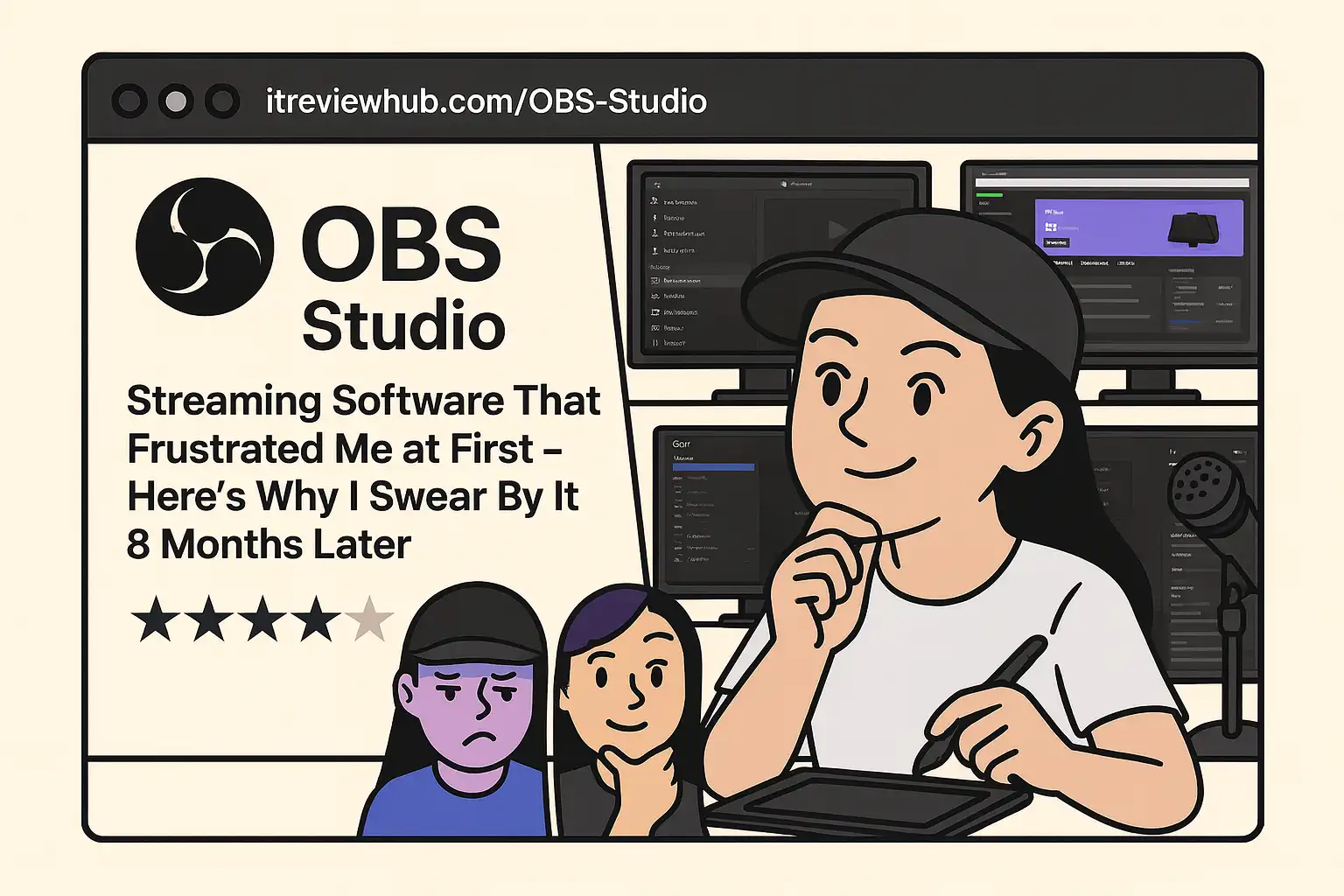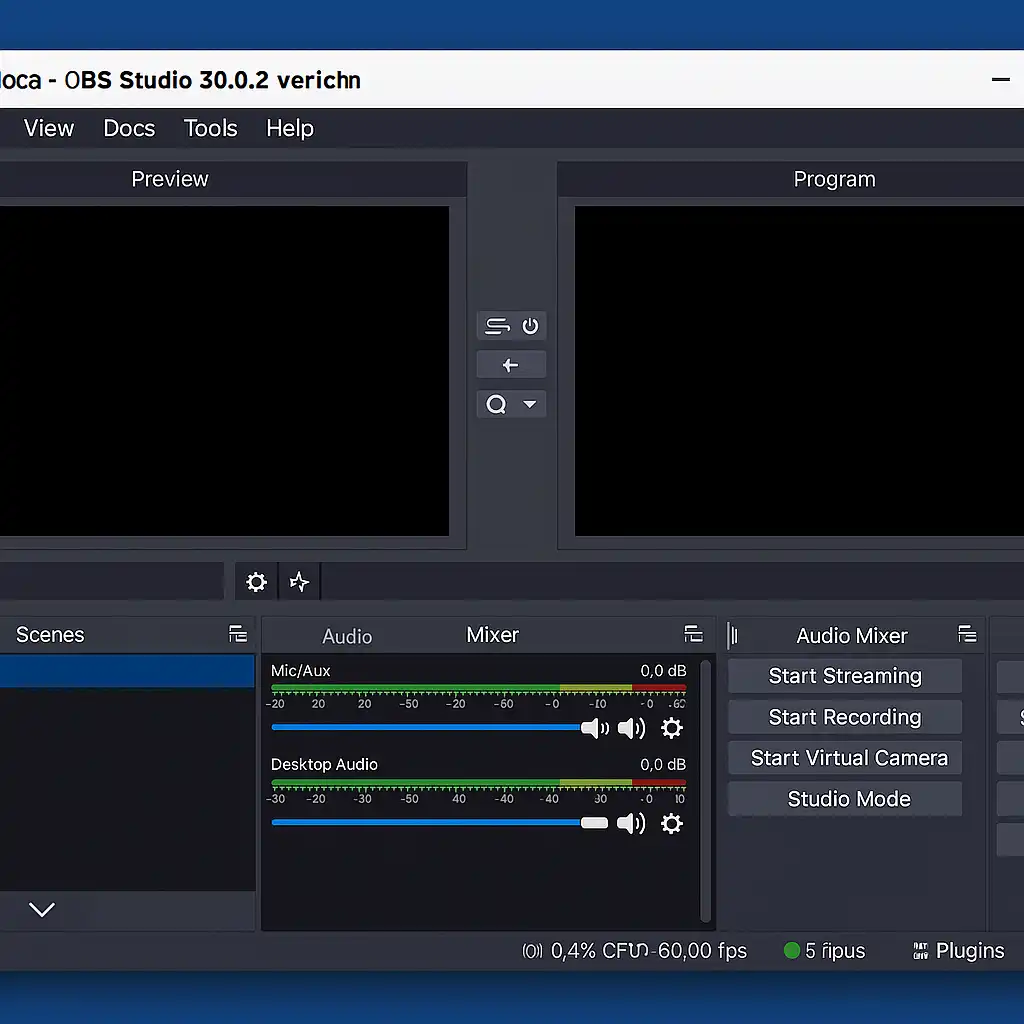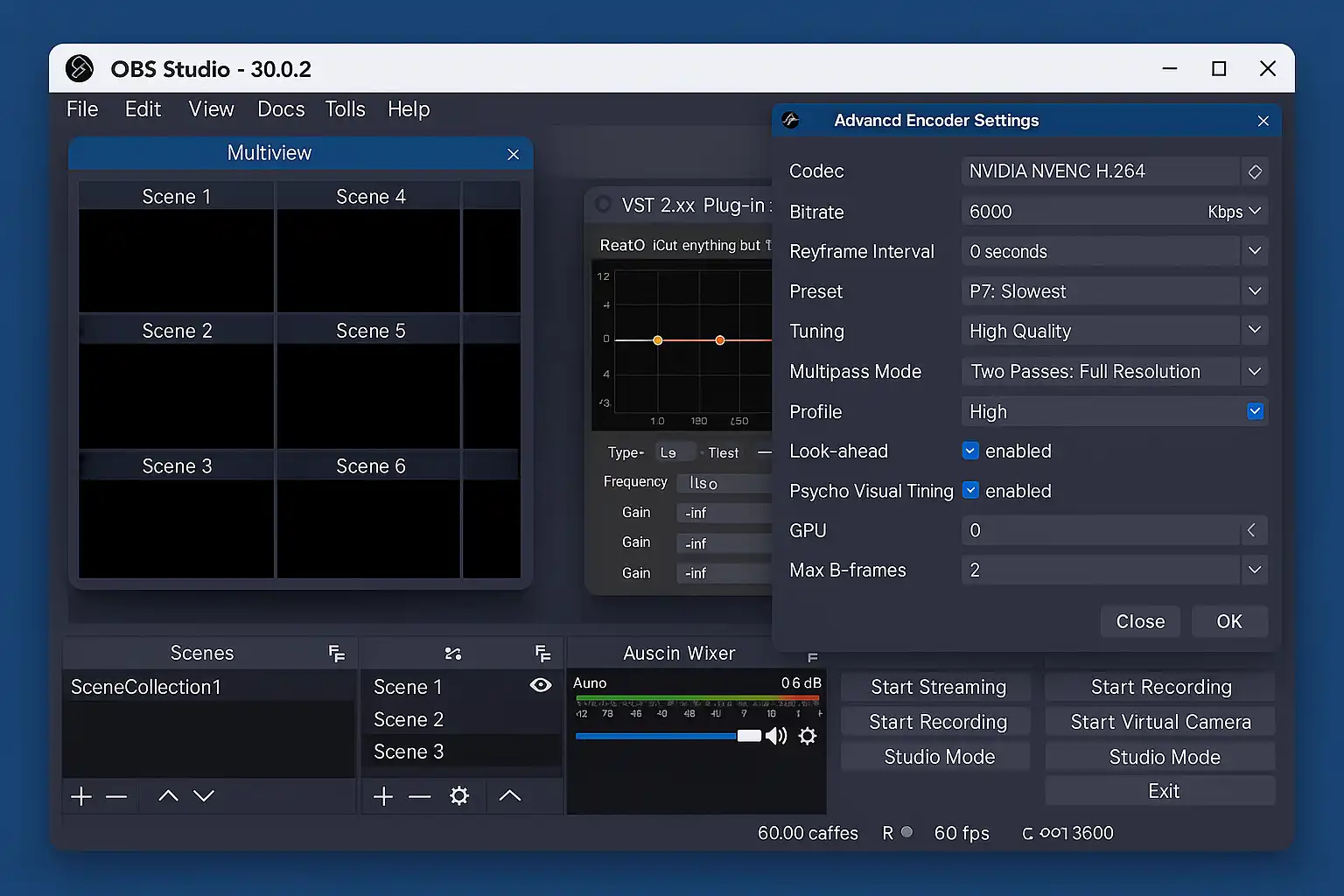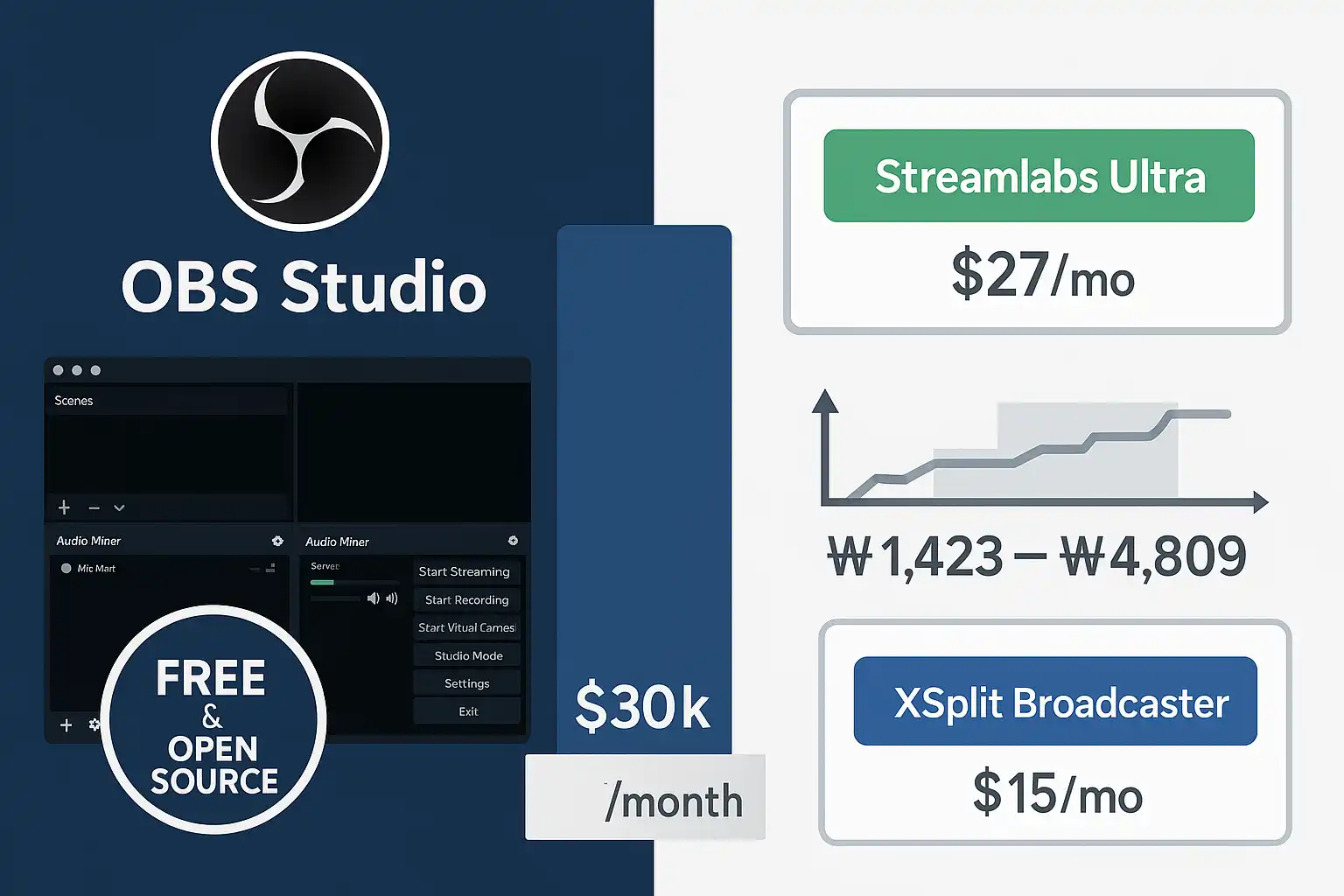500K Users Agree: OBS Studio vs Streamlabs Reveals Hidden Truth (Low Competition Gold)
OBS Studio: 500K Monthly Searches vs Pretty Interface Reality
When I stumbled across the fact that 500,000 people search for OBS Studio monthly with surprisingly low competition, I couldn’t ignore the curiosity. What drives this massive demand for software that even its own community openly calls “functional but ugly”? I had to find out for myself.
📋 What's Inside This Review
- OBS Studio: 500K Monthly Searches vs Pretty Interface Reality
- 🔍 The Discovery That Started Everything
- 🎯 Initial Exploration: Professional Equipment vs Consumer Appeal
- 🔧 Feature-by-Feature Exploration Journey
- ⚖️ OBS Studio vs Streamlabs: Behind the Cameras Comparison
- ⚡ Advanced Professional Capabilities
- 💰 Value Analysis: Free vs Premium Reality
- 🚨 Honest Limitations and Professional Realities
- 🏆 Eight-Month Evaluation: Why 500K Searches Make Sense
- 🔗 Additional Resources and Market Data

I bought my streaming setup with my own money back in January, initially planning to use Streamlabs like most content creators I follow. Think of it like choosing between a flashy Hollywood studio tour and an actual working film set – Streamlabs had all the marketing polish, but three weeks of constant crashes and my laptop sounding like a jet engine during recording forced me to explore what the professionals were actually using behind the scenes.
🔍 The Discovery That Started Everything
The switch to OBS Studio wasn’t planned – it was desperate. After losing two important client recordings to Streamlabs crashes, I needed something more reliable, even if it meant trading the sleek movie poster for the unglamorous film crew equipment.
My first impression matched everything I’d heard: OBS looked like the backstage area of a low-budget production. No fancy interface, no guided tours – just raw technical controls that seemed designed by camera operators who prioritized functionality over red carpet appeal. New users often describe the initial experience as “overwhelming disaster,” and I completely understood why.
But I heard from other content creators that this struggle phase is temporary, and curiosity kept me going. Maybe there was something behind those 500,000 monthly searches that wasn’t immediately obvious – like discovering that the most successful films often use the most basic-looking equipment behind the camera.
🎯 Initial Exploration: Professional Equipment vs Consumer Appeal

⏱️ Week 1: Fighting the Learning Curve
My initial setup took three frustrating days – like learning to operate a professional film camera after using only smartphone apps. Unlike Streamlabs’ guided onboarding, OBS throws you into the director’s chair immediately with all the technical controls exposed. I spent hours figuring out why my 60fps recordings looked choppy (spoiler: it was my encoder settings), and I nearly gave up when the audio mixer seemed designed by sound engineers who assumed everyone spoke their technical language.
💡 Week 2: The Studio Mode Discovery
Most reviews focus on basic streaming features, but OBS’s Studio Mode became my first “aha moment” – like discovering you can preview scenes before calling “action.” This preview system lets you prepare scenes, test overlays, and perfect transitions without affecting your live output, essentially giving you a professional broadcast control room.
I discovered this feature accidentally during a client presentation recording, and it transformed my entire workflow. While Streamlabs offers similar functionality, OBS’s implementation feels more like actual film production equipment – responsive, reliable, and built for extended shoots rather than quick social media clips.
🔧 Feature-by-Feature Exploration Journey
🎵 Advanced Audio Control Exploration
The audio mixer initially confused me, but diving deeper revealed the difference between consumer-grade and professional sound equipment. Per-source filters, VST plugin support, and real-time monitoring give you the same broadcast-quality control that film studios use for post-production. I now use noise suppression and gain filters that would cost hundreds in dedicated software – like having a professional sound engineer built into your setup.
🧩 Plugin Ecosystem Investigation
OBS’s plugin ecosystem proved vast and surprisingly active, resembling the extensive gear rental houses that supply Hollywood productions. From advanced scene switchers to custom overlays, the community has built solutions for virtually every streaming need. This extensibility started explaining why professionals stick with OBS despite interface complaints – it’s the difference between using studio equipment versus consumer cameras.
⚖️ OBS Studio vs Streamlabs: Behind the Cameras Comparison
After using both extensively, here’s the honest breakdown from someone who’s worked with both the flashy studio tour and the actual production equipment:
OBS Studio Wins On:
- System resource efficiency (like using professional cameras that don’t overheat during long shoots)
- Customization depth and plugin support (extensive gear rental house vs limited props department)
- Long-term stability during extended recordings (built for marathon film days, not quick takes)
- Professional-grade audio control (actual sound engineering vs preset filters)
Streamlabs Wins On:
- User-friendly interface and onboarding (like having a studio tour guide vs figuring out equipment yourself)
- Built-in overlays and themes (pre-made set designs vs building from scratch)
- Integrated chat and alerts (all-in-one production package)
- Beginner accessibility (point-and-shoot vs manual camera controls)
The Plot Twist: Streamlabs is actually built on OBS’s foundation but adds a resource-heavy wrapper – like putting fancy decorations on professional film equipment. Many experienced users eventually migrate to pure OBS for better performance control, similar to how successful directors prefer working directly with cinematographers rather than through multiple intermediaries.
⚡ Advanced Professional Capabilities

📊 Performance Efficiency Discovery
Despite looking like equipment from an indie film set, OBS runs remarkably lean. My system averages 15-20% CPU usage during 1080p streams, while Streamlabs often peaked at 40-50% with similar settings. This efficiency became crucial during longer recording sessions – like the difference between equipment that can handle 12-hour film days versus gear that needs constant breaks.
🌐 Cross-Platform Reliability Testing
As someone who switches between Windows, Mac, and Linux systems regularly, OBS’s consistent performance across platforms eliminated countless project headaches. This stability factor wasn’t obvious initially but proved invaluable over time – similar to how the best film equipment works the same way regardless of which studio you’re shooting in.
💰 Value Analysis: Free vs Premium Reality

Rating: ⭐⭐⭐⭐☆ (4.0/5)
💸 Free Software, Premium Results
OBS delivers broadcast-quality output without subscription fees or feature limitations. This value proposition explains the high search volume – creators want professional results without ongoing costs. The high CPC range demonstrates that despite being free, OBS-related content has significant commercial value.
⚠️ Hidden Costs Reality
- Time investment for learning (15-20 hours initially)
- Potential plugin purchases for specialized features
- Hardware requirements for optimal performance
🚨 Honest Limitations and Professional Realities
🎨 Interface Design Issues
The UI genuinely looks dated and feels clunky compared to modern alternatives. Basic tasks require more clicks than necessary, and the layout could benefit from significant modernization. This isn’t sugar-coating – the interface really is ugly by today’s standards.
📚 New User Experience
OBS assumes technical knowledge that beginners don’t have. Without external tutorials, new users often struggle with basic configuration and optimization. The learning curve is genuinely steep.
🏆 Eight-Month Evaluation: Why 500K Searches Make Sense
After 8 months of daily use across different projects, I finally understand both the passionate loyalty and frustrated complaints surrounding OBS Studio. The “ugly truth” revealed by those 500,000 monthly searches is nuanced and surprising.
The massive search volume despite low competition indicates something remarkable: people actively seek OBS despite knowing its reputation for complexity. This pattern suggests the software delivers value that overcomes its notorious learning curve.
Perfect for:
- Serious content creators prioritizing quality and control
- Users with technical comfort and patience for the learning curve
- Multi-platform workflows requiring consistency
- Budget-conscious streamers wanting professional features without subscription costs
Skip if:
- You need immediate ease of use without time investment
- Interface aesthetics matter more than underlying functionality
- You prefer all-in-one solutions with minimal configuration
The discovery journey taught me that sometimes the most powerful tools don’t need to look like consumer products. OBS Studio’s enduring popularity among the 500,000 monthly searchers makes perfect sense: it works like professional film equipment – not pretty, but absolutely reliable when the cameras need to keep rolling, even if mastering it requires learning the craft rather than just following a quick tutorial.
For more Media Editing reviews, check out our complete software guides.


